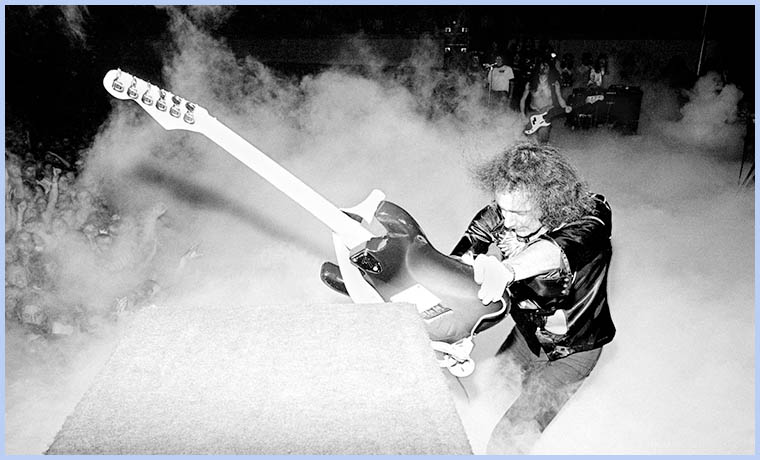|
Ritchie Blackmore US Radio Interview 1975  Earlier in the week, Paul Gambaccini spoke with Ritchie Blackmore about his forthcoming solo LP and asked him how he became involved with the American group Elf. RB: We used to tour with an American band called Elf. And this was about 3 years ago and about 6 months ago, no about 9 months ago I decided to do a single which wasn't written by Purple. It was a song called 'Black Sheep of the Family'. And I wanted to do this record because I liked it. And Purple wouldn't do it. So, I said I'll just get some session people and do it myself. I didn't want to do a solo thing, but it was just something I wanted to put down because I thought it could be a hit and it's a nice song. So, I called in Mr. Dio and Ronnie James Dio said he'd do it for a £1,000. And we started with that and it turned out very well. And then we thought, well, we need a B-side. So we did a B-side. That turned out so well that we thought "Maybe we should do an LP". So, we did an LP. That's how the whole thing started. At which point in this whole scenario did you finally make your mind up to leave Purple? RB: After we finished the LP. It was exactly the music that I wanted to play. There was a lot of pressure going down with Deep Purple. A bit too much for my liking. We had to record three LPs a year and tour the world and it just got a bit too much, the pressure really. Are you going to do the Paul McCartney technique of calling it Paul McCartney and Wings and then just dropping it? RB: Dropping what? The McCartney once everybody realizes it's him. RB: No, he we're not having him in the band. No, no. I just put my name to the LP to help sell it really, to tell people that I've left because sometimes people don't realize, you know, what band you're in. But I like it to be called Rainbow. Just Rainbow eventually, maybe in 8 months, 10 months when people really know who's in the band, when it's established itself as a band. Let's alternate discussing some tracks from the album. The first one is the one that really leads off the album which is 'Man on the Silver Mountain'. RJD: The song is dragged from the hidden depths of my mind I guess. You might do the lyrics to this one. It's basically about the 'Man on the Silver Mountain", is kind of a God figure and everyone else involved in the in the lyrics and the song part are calling upon him to somehow save them. When you listen to the lyrics, you'll hear they're pleading with him to make them holy again. That's just a kind of quasy religious kind of thing, I guess. 'Catch the Rainbow' is a more mellow tune than the other numbers on the first side. Who wrote this one? RB: Well, most of the songs except two were written by Ronnie and myself. I usually write the progressions and the chord sequences and few riffs and timings. Ronnie always have the lyrics, mainly the melodies. 'Catch the Rainbow' was inspired by Judy Garland, actually. The next track is actually called '16th Century Greensleeves'. RB: That's because it has nothing whatsoever to do with '16th Century Greensleeves'. No. My favorite song is 'Greensleeves', funny enough. This was written around a mode, which is what they used to use in those days, rather than scales. It's like all the white notes on a piano rather than hitting black notes. Now, the lyrics are all about this girl that's imprisoned in this castle and it's set in a 16th Century film and the progression is very medieval although it's still hard rock. What we're trying to get across on a lot of the tracks is this medieval approach, to both into medieval music. RJD: I actually like this one lyrically. The idea is a medieval black knight who who comes out of the castle periodically to snatch away one of the young peasant maidens for his own evil purposes, of course. He finally captures 'Greensleeves' for the heroine of the story. And the president say "Wrong, this time we're going to have you". So they storm the castle, they burn it down, they end up hanging him. And it's just the idea that the peasants have finally rebelled against this tyrant that's the progression from 16th Century to a democracy of today actually I guess. © Paul Gambaccini, US Radio - November 1975 |
